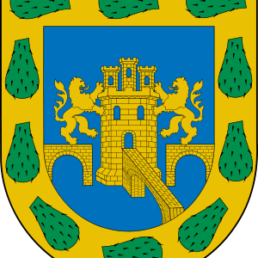Mexico City is transforming its transportation network to prioritize active mobility and transit-oriented development in an effort to create a more connected, coordinated, and accessible urban landscape.
Launched in 2014, Mexico City’s Comprehensive Mobility Program represents a paradigm shift in the city’s approach to urban planning, prioritizing pedestrians, cyclists, and users of the public transportation system over private automobiles in an effort to catalyze economic development and social inclusion and reduce CO2 emissions. The Comprehensive Mobility Program is structured under a number of strategic areas, with a clear focus on creating complete streets that prioritize active and public transit and fostering transit-oriented development (TOD).

To support these goals, Mexico City has already added 65 CNG buses on two lines, transporting 23,000 users a day, extended its bus rapid transit system to cover six lines, and expanded its bike-sharing system, Ecobici, to 6,000 bicycles and 444 stations. In the coming years, the program, which is closely linked to the city’s General Development Program 2013-2018, will further transform the city, improving access to social and economic opportunities by adding 110 km of cycling infrastructure and cleaning the city’s air by replacing 20,000 old polluting minibuses and taxis with new cleaner vehicles.
30% reduction in city-wide CO2 emissions by 2020 supported by the Comprehensive Mobility Program
The challenge
Covering nearly 1,500 km2, Mexico City’s sprawling footprint has led to inequitable access to key city resources and high CO2 emissions. By overhauling the city’s transportation network to focus on mobility and access via active and public transit, Mexico City is taking the major necessary steps to redefine its landscape, reduce car dependence, and cultivate a connected and coordinated city.
Co-benefits
Economic Economic activity along Calle Madero, a historic street that received mobility improvements, has increased by 80% in the form of sales, employment, and business investment.
Environmental As the transport sector is the main contributor to Mexico City’s CO2 emissions, prioritizing active mobility and public transit will substantially reduce energy use.
Health Replacing tens of thousands of polluting minibuses and taxis, and adding CNG buses to the city’s fleet, will reduce outdoor air pollution.
Social A focus on transit-oriented development will help more city residents to access crucial economic opportunities and city services via affordable public transport.
About Mexico City
Mexico City is the capital and most populous city of Mexico. Mexico City is one of the most important financial centers in the Americas. According to the most recent definition agreed upon by the federal and state governments, the Greater Mexico City population is 21.3 million people, making it the largest metropolitan area of the Western Hemisphere. In recent years, the local government has passed a wave of liberal policies, such as abortion on request, a limited form of euthanasia, no-fault divorce, and same-sex marriage.


